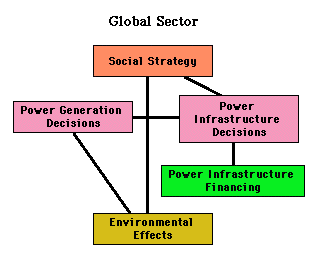 Computer Simulation ModelThe interconnection of global power resources to obtain an optimal sustainable energy solutionPurposeThis computer model will quantify the economic, environmental, and social benefits of developing remote renewable energy sources and linking them to population centers via long distance electrical transmission lines. We will demonstrate whether this course of action represents an optimal sustainable energy solution for the world by comparing our projections to those produced by the World Energy Council (WEC) and others. Endorsement from the Society for Computer Simulation AbstractWhile availability of electricity is essential for a high quality of life, currently 80% of electricity is generated by burning finite and polluting fossil fuels. Renewable energy is extremely abundant, inexhaustible, and potentially less polluting. Technologies for converting this energy to electricity are now becoming cost competitive with fossil fuel generation. Most sites of large scale renewable energy are located far from population centers, but current transmission line technology is capable of economically delivering electricity as far as 4000 miles from the source. This model will be the first comprehensive attempt to model this energy option. The results will support integrated resource planning in the realm of energy by quantifying the impact of the method of power generation, through considering the social, economic, health, and environmental effects. In the model, the world will be segmented into the nine geographical regions used by the WEC. Each regional model sector will encompass power generation, transmission, and sale; the financing, construction, and maintenance of power infrastructure (generators and transmission lines); and also key societal and environmental factors such as population, quality of life, and pollution. Links between regions will model trade in electricity, inter regional financing of infrastructure, and pollution flow across regional boundaries.
In addition to the nine regional sectors, a global sector will simulate worldwide climatic effects of electricity generation, as well as global coordination of electrical generation decision-making.
It's important to realize that the Block Diagram we have now goes to the heart of the World Game™ question: How do we provide a decent quality of life for everyone and sustain the environment? The cover article in "Simulation" (April 95) is an excellent summary of all the issues. There were at least 5 meetings over 2 years with the Mission Earth Task Force of the Computer Simulation Society -- debating, adding issues, determining relationships and priorities. The potential impact of this tool goes far beyond the electrical interconnection of power grids between countries. Review the elements of the computer modelling project. It corresponds to the milestone chart available from the GENI office.
|

